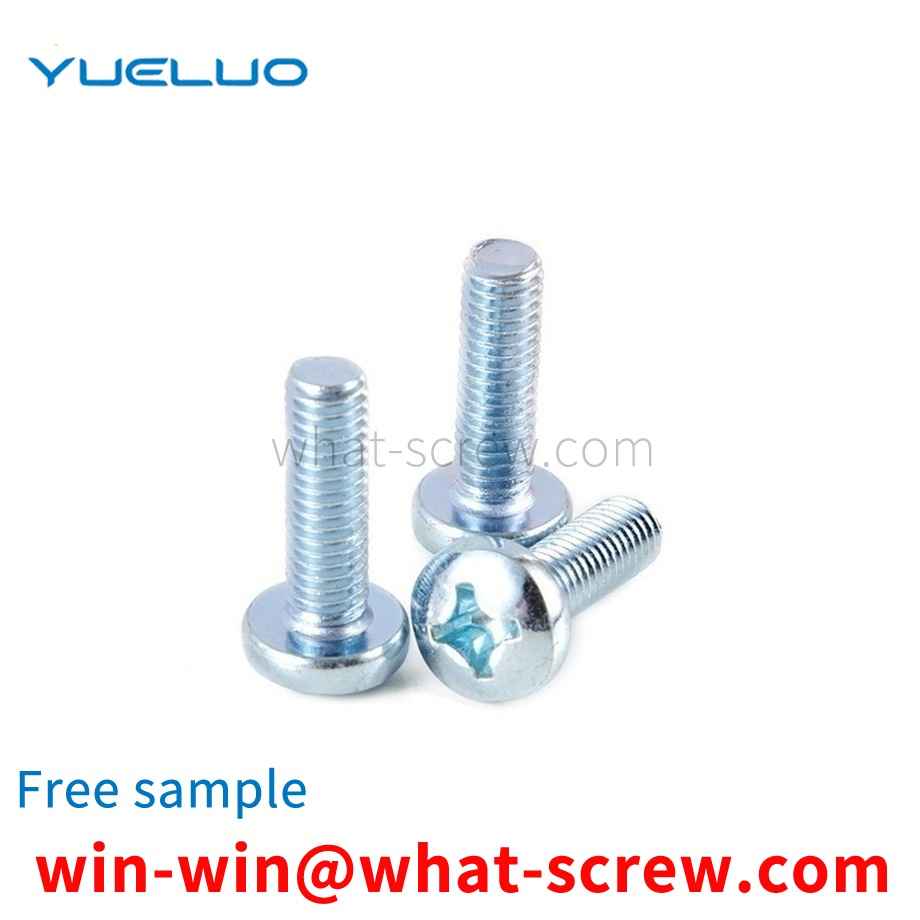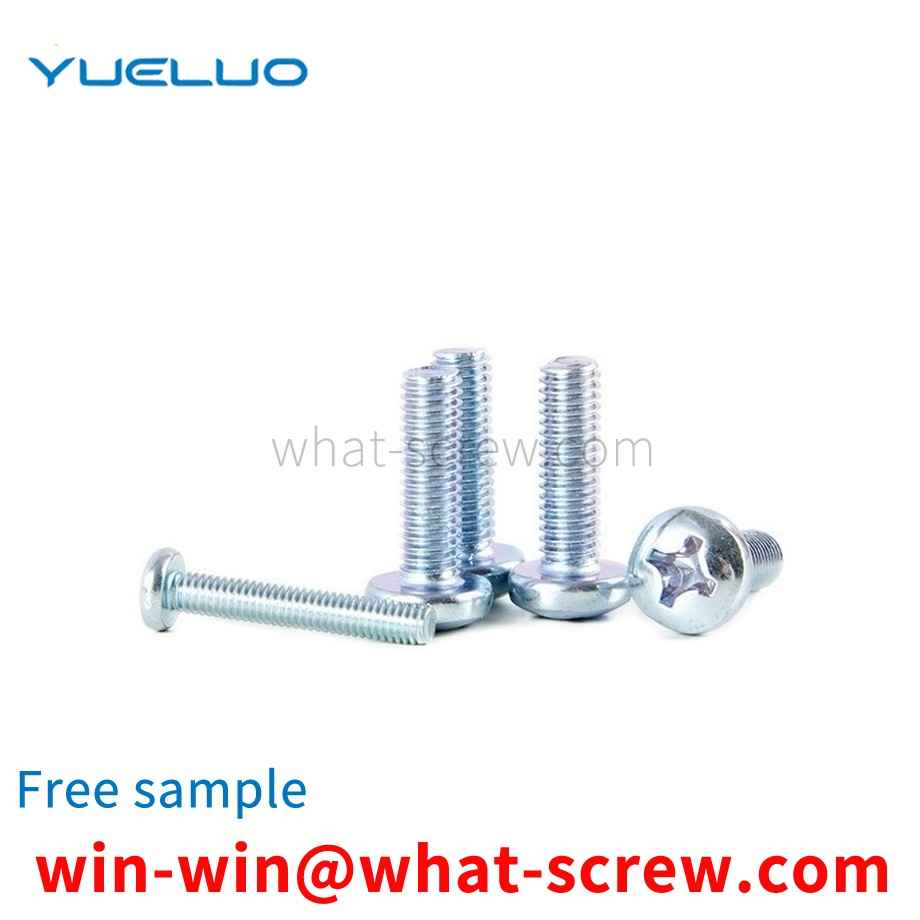High-strength self-locking nuts are a category of self-locking nuts with high strength and reliability. It is mainly based on the introduction of European technology, which is used for road construction machinery, mining machinery, vibration machinery and equipment, etc. There are very few domestic manufacturers of such products.
The material of the round head three combination screw is divided into iron and stainless steel. The iron ones are made of different iron screw wires. Generally, the wire of the combination screw is 1010, 1018, 10B21 and so on. 10B21 is used to make 8.8 grade combination screws. Like 8.8-grade socket head cap screws, 10B21 wires are often used to make them. When done, go to heat treatment. After heat treatment, remove hydrogen and electroplating. This is to prevent the spring washer of the socket head cap screw from breaking. Stainless steel combination screws, in the combination screw market, generally refer to stainless steel SUS304 combination screws. 201 combination screws generally do very little. Few manufacturers of round head three combination screws produce 201 combination screws. Because the hardness of the screw wire of stainless steel 201 is not well controlled, it is easy to produce cracks. Introduction to the basic knowledge of electroplating round head combination screw electroplating generally refers to the de-plating of iron combination screws. Electroplating is divided into environmental protection and non-environmental protection. Commonly used combination screw electroplating colors include green color zinc, green blue zinc, green white zinc, green nickel, red color, white zinc, white nickel, etc. Cross recessed combination screws, hexagon combination bolts and self-tapping combination screws are used in the same way as the corresponding cross recessed screws, hexagon head bolts and self-tapping screws. The main feature of these combination screws is that they are equipped with corresponding washers, which are very convenient to use.
rivet is a nail-shaped object used to join two parts or components with a through hole and a cap on one end. In riveting, the riveted parts are connected by their own deformation or interference. There are many types of rivets, and they are informal. Commonly used are R-type rivets, fan rivets, blind rivets, blind rivets, tree rivets, semi-circular head, flat head, semi-hollow rivets, solid rivets, countersunk head rivets, blind rivets, hollow rivets, these usually use their own deformation Connect the riveted parts. Generally less than 8 mm with cold riveting, larger than this size with hot riveting. But there are exceptions. For example, the nameplate on some locks is riveted by the interference between the rivet and the lock body hole.
Fasteners are a type of mechanical parts that are used for fastening connections and are widely used. All kinds of fasteners can be seen on all kinds of machinery, equipment, vehicles, ships, railways, bridges, buildings, structures, tools, instruments, meters and supplies. It is characterized by a wide variety of specifications, different performance uses, and a very high degree of standardization, serialization and generalization. Therefore, some people also refer to a type of fasteners with existing national standards as standard fasteners, or simply as standard parts. Fasteners are the most widely used mechanical foundations. With my country's entry into the WTO in 2001, it has entered the ranks of major international trade countries. my country's fastener products are exported to many countries in the world, and fastener products from all over the world are also pouring into the Chinese market. Fasteners, as one of the products with the largest import and export volume in my country, are in line with international standards, which have important practical significance and practical significance for promoting Chinese fastener enterprises to go to the world and promoting fastener enterprises to fully participate in international cooperation and competition. strategic significance. Due to the specifications, dimensions, tolerances, weights, properties, surface conditions, marking methods, and specific requirements of items such as acceptance inspection, marking and packaging for each specific fastener product.
There are two types of bolt detection: manual and machine. Manual is the most primitive and the most commonly used consistent detection method. In order to minimize the outflow of defective products, general production enterprise personnel inspect the packaged or shipped products by visual means to exclude defective products (defects include tooth damage, mixed materials, rust, etc.). [2] Another way is automatic machine inspection, mainly magnetic particle inspection. Magnetic particle inspection is to use the interaction between the leakage magnetic field at the defect of the bolt and the magnetic powder, aiming at the difference between the magnetic permeability of the bolts (such as cracks, slag inclusions, mixed materials, etc.) and the magnetic permeability of steel, these materials are discontinuous after magnetization. The magnetic field at the place will be turbulent, and a leakage magnetic field will be generated on the surface of the workpiece where part of the magnetic flux leaks, thereby attracting the magnetic powder to form the magnetic powder accumulation at the defect—magnetic traces. The accumulation of these magnetic powders is observed and explained, and the purpose of rejecting defective products has been achieved.
We have many years of experience in the production and sales of screws, nuts, flat washers, etc. The main products are: titanium steel screws, U-shaped tube clamp screws, 304 core blind rivets, hexagonal head screws and other products, we can provide you with suitable products for you fastener solutions.



















 Service Hotline
Service Hotline




